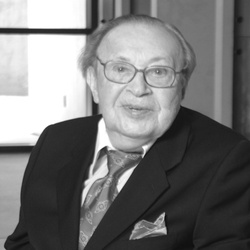Plonsk
Pronounced “Pwohnysk” (Russian: Плоньск / Plon’sk, Yiddish: פּלאָנסק / Plintsk, Hebrew: פלונסק)
Jewish merchants arrived in the town of Płońsk around the 1440s trading items such as wood, tar and salts. In the early 1600s, the Jewish community built the Great Synagogue with elaborate interior carvings. Tragically, Polish troops murdered nearly all of the Jewish population in April 1656 after Jews were accused of collaborating with Swedish invaders.
The Jewish community of Płońsk revived in the late 1700s despite attempts by Christian merchants to limit Jewish trade. About 2,800 Jewish residents were counted by 1808—nearly 75 percent of the total population. Around the same time, the town and surrounding areas were annexed to the Russian Empire. In the 1800s, a split developed within the Jewish community between those who preferred cultural assimilation and others who maintained more traditional dress and appearance, called Hasidim. Men of both groups joined the 1863 uprising against Russia.
The Zionist political party that fought for the creation of an independent Jewish state grew increasingly popular at the end of the century, especially among the Hasidim. Large numbers of Zionists from Płońsk began to emigrate to Palestine (at that time a British colony). Future Israeli Prime Minister David Ben-Gurion helped found an organization to teach emigrants Hebrew and other skills before leaving Płońsk himself in 1906.
Płońsk was devastated during World War I (1914-1918). The German army invaded in 1915 and many Jewish families relied on a soup kitchen established by the Jewish community organization. After the war, the town was incorporated into the newly independent country of Poland.
In the 1920s and 1930s, about a third to half of the Płońsk city council members were Jewish, roughly reflecting the proportions of the general population. Jewish clubs included a choir and drama circle. Charities offered interest-free loans and aid to the sick. Many Jews operated their own small businesses as tailors, shoemakers or butchers. Others traded grain and livestock. Survivor Morris Blum remembered that his father sold eggs, buying them from local farmers and distributing them across Europe. The trade meant “we were the only people in town that had a telephone.”
Blum’s family strictly observed Orthodox Jewish practices. He wore payot (side curls) and his father went to the synagogue three times a day to pray. Every Friday night the family invited poor Jews to dinner. Blum later recalled, “We always had two or three guests…It was a feast.”
Growing anti-Jewish sentiment manifested in Płońsk in the 1930s. Antisemitic groups boycotted Jewish stores and threw stones through the windows of Jewish property. An anti-Jewish riot broke out in 1936.
German troops invaded Poland on September 1, 1939, reaching Płońsk on September 5. Two weeks later, all Jewish men 16 and older were forced to register at the local prison where Nazis beat them and cut their beards. Some Jews were arrested. Later that year all Jewish residents were required to wear a yellow Star of David and the Great Synagogue was converted into an egg warehouse. Jewish men and women were sent to factories for forced labor.
In May 1941, Nazis confined all Jewish families in Płońsk into a ghetto with barbed wire. Morris Blum recounted that he slept on the floor because his family shared one room with “7, 9, 11 people.” Many suffered from typhoid in the overcrowded and unsanitary conditions. Blum and his brother “risked our lives and smuggled in some food.”
Deportations to the killing center of Auschwitz-Birkenau began in October 1942. Of his parents and six siblings, only Morris Blum and his brother Lee survived. The last transport, completing the total annihilation of the Jewish community, left Płońsk in December 1942.
Plonsk: Photographs & Artifacts
Destroyed Communities Memorial Slope
Plonsk: Survivors

When we arrived at Auschwitz they lined up people and they picked all the people that could work. Like me, I was strong. They pulled me on one side. Then I pulled my brother with me, Lee. I guess that’s why he is alive today. I had one younger brother, Zalman, he ran over to us. He was too small and the SS put him back. Then we were selected to go to work. Then they took my parents, my brother and all the rest of them away. And I never saw them again in my life.